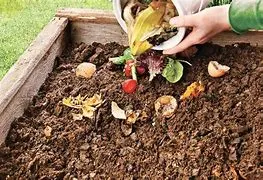You Can Grow Amazing Tomatoes
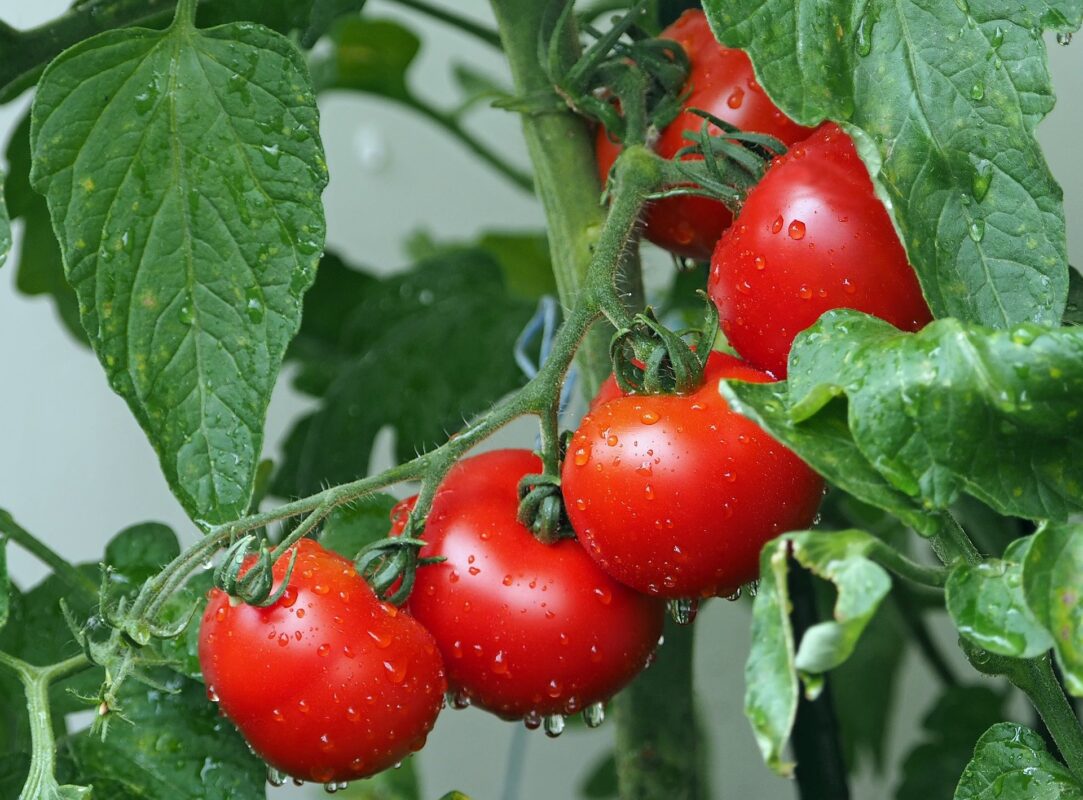

Big, fat, amazing tomatoes are a welcome sight in any kitchen. But, sometimes the tomatoes at your local grocer are hard, green, and less than appetizing. You can grow amazing tomatoes in your backyard or patio by following these simple steps. Everyone’s soil is different so don’t give up. Amazing tomatoes are easy to grow!
Preparing the Soil for Amazing Tomatoes

Start with a soil test, or at least a simple pH test of the soil. Amazing tomatoes like a pH of about 6.5 (6.0-6.5 or so is fine). If your soil is acidic add a little lime at the rate of 5-10 pounds per 100 square feet worked into the top 6″. Don’t leave the lime in clumps or you will burn the plants. For alkaline soil, add some peat moss or compost mulch.
Tomato plants like to eat. Add add finished compost since it is the best additive to support amazing tomatoes. Work in 2-to-3-inches each year. Then, when the plants first start to put out leaves, add more alongside the plants as the season advances. Many gardeners, including Mark from Self-Sufficient Me, swears by adding a fish head underneath each tomato plant. The vitamins and minerals in the fish head, feed the tomato plant for a bountiful crop.
Otherwise, an all-natural organic fertilizer with a slightly higher middle number (Phosphorus from the NPK) can also be incorporated according to package directions. Do not use a high-Nitrogen fertilizer or you will get a lot of leaves but few tomatoes and certainly not amazing tomatoes. Also, overfertilized, plants invite disease so don’t overfeed. This is why the fish head makes a good fertilizer, because it breaks down slowly as the plant grows.
Starting Seeds for Amazing Tomatoes
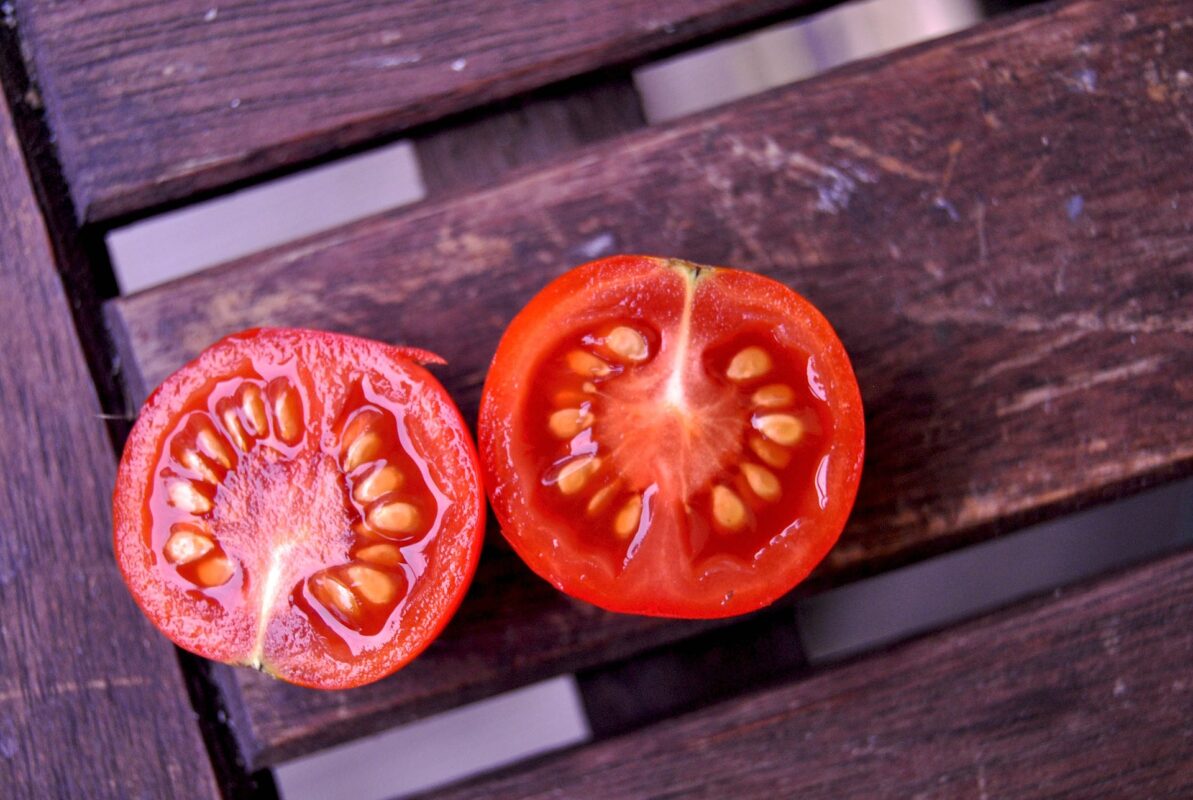
- Work from your final frost date. (calculate it here);
- Count back 5 or 6 weeks and that is your approximate planting date. If it’s time to plant now, buy established plants at a garden center. The plants should be deep green and as hide as they are tall.
- Seeds germinated on a heat mat in flats will get off to a particularly fast start. Soil temperature must be 70 degrees but higher is better.
- Before planting, clean seedling flats 1:10 bleach to water solution or hot, soapy water.
- Start with a fresh seed-starting mix. A soilless mix works best. This is not heavier “potting soil,” but labeled for seedlings.
- Place 2-3 seeds per compartment or pot. After a few weeks, take out the weaklings.
- Barely cover seeds after sowing with ¼ inch more mix and tamp down, then moisten with a spray bottle.
- Keep the covered trays in a warm spot. These are seeds in darkness so no light is needed.
- Do not let the seeds dry out before they germinate.
- Seedlings will appear from a few days to 10 days or so. A consistently moist environment is essential so cover with plastic wrap. Don’t let them cook or drown, and lid or bag so moisture beads don’t run down the sides
- Once seedlings appear, it’s critical to remove the heat mat and move the babies to full sun or grow lights. A lack of light causes tall leggy plants that can fall over.
- Feed with half-strength water-soluble fertilizer after the first true leaves appear.
- Thin out into individual pots so they do not become crowded.
- Mist, with tepid water, or use a device whose spout delivers gently. Don’t overwater.
- If indoors, set up a fan, on low. Seedlings need to grow a strong base. Also, air movement helps prevent deadly fungal diseases like damping off.
- Pet your seedlings. Brush the tops of the seedlings daily with your hand. It provides the “mechanical conditioning” that creates sturdy, not spindly seedlings. Gently pet them for a half-minute or minute, as you talk to them and encourage them to grow into amazing tomato plants.
- If any flower buds appear, pinch them off. Don’t let these babies stress, trying to reproduce just yet.
Outdoor Location to Grow Tomatoes
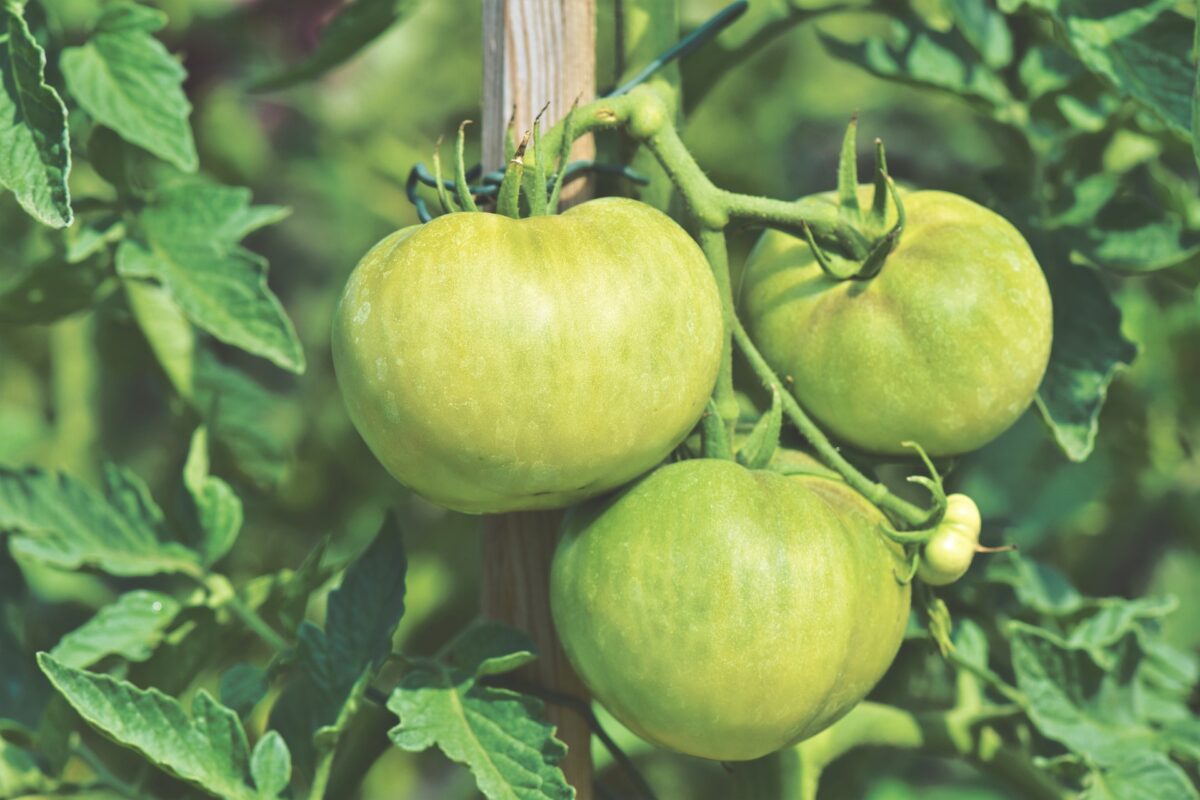
- Grow tomatoes within black plastic landscape fabric to increase soil heat. This provides weed control and helps with soil-splash when watering. Soil borne spores cannot get up onto the plant because of the barrier.
- Strip the lower leaves from the plants to eliminate a “ladder” for spores splashing up from the soil.
- Trellis and stake tomatoes, (more on this later).
- Put tomatoes on the edge of a bed, not in the middle. Never do a teepee since crowded tomatoes don’t product well and allow disease and pests to spread quickly.
- Stake tomatoes 18 inches apart, within a row, and at least 3 feet between rows.
How to Plant Amazing Tomatoes Outdoors
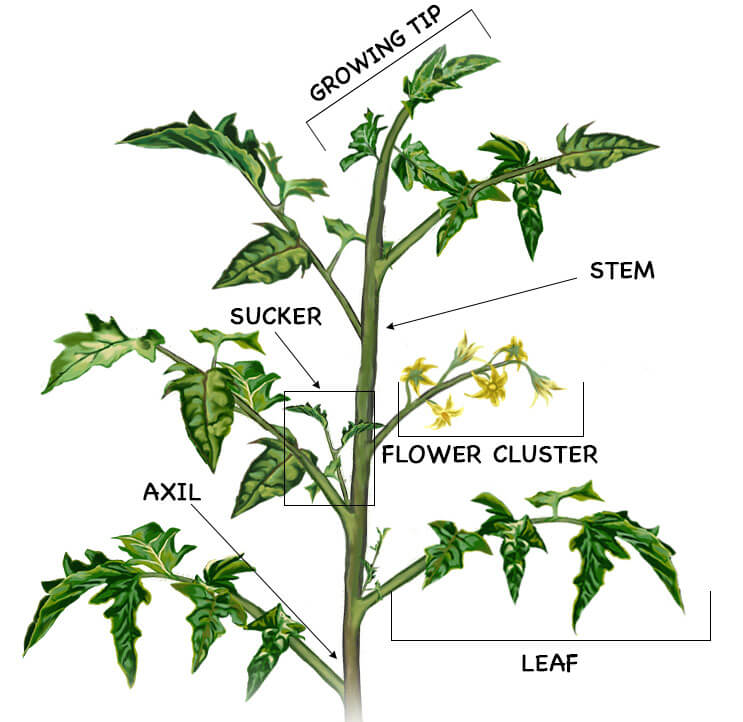
Tomatoes will produce best if they are well-rooted, so bury them deep, right down to the topmost pair, or two, of leaves. (This is the time to put in the fish head if you want to try it.) Tomatoes grow roots all along their stems. You can bury the entire plant, in a trench, for a stronger root system. To do so, dig a small trench about 6 to 8 inches deep. Make the trench almost as long as the plant is tall, including its root ball. Lay the plant horizontally, while gently, bending the top end upwards. Bury all but that end with the upper pair, or two, of leaves sticking out of the soil.
Once branches begin to grow, it is important to look for suckers, in the crotches of the branch, and the main stem. These must be pinched off to promote vigorous growth and production.
Grow Amazing Tomatoes With a Trellis or Cage
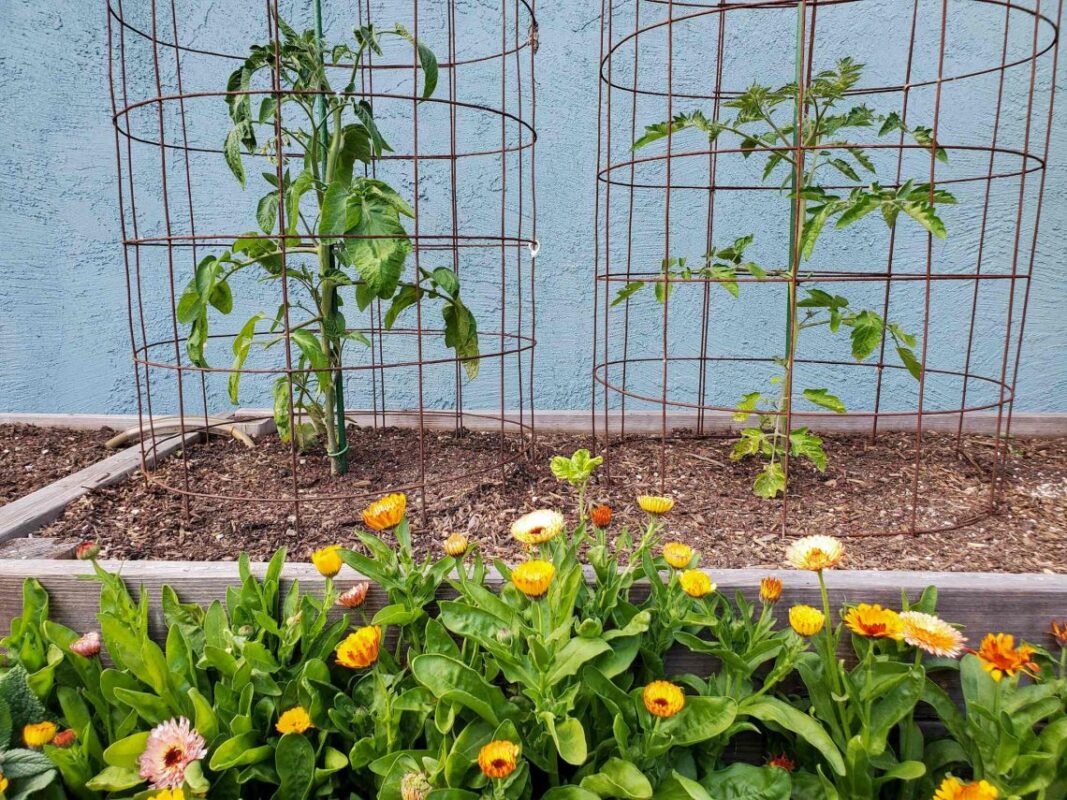
Staked or trellised tomatoes take up less space than caged tomatoes. Trellis tomatoes need regular tying up and pruning of excess foliage. The cages should be 18-24 inches across. Get strong large size cages because the biggest growers will push out quickly. Prune tomatoes to get rid of suckers. The suckers are little branches that grow between the main branches – see the diagram above.
- Staked plants produce faster crops of, generally, larger fruit. Staking and pruning also help manage any disease. Stakes must be at least 1 inch thick and 6 feet high, inserted a foot into the ground. Staked plants require ongoing pruning. Keep the plant to one or two main stems, vine-like, not bushy. All small suckers, in the crotches between the leaves and the main stem, must be removed.
- Caged plants are easier to care for, and in the long term may produce heavier yields They have more branches and stems so more area to produce. You can make excellent cages from concrete reinforcing wire (6 feet of it makes a 22-inch cage). Stabilize each cage with a stake attached with zip ties.
- Cages can be used as mini-greenhouses should late or early frosts come. Clamp pieces of clear, heavy plastic around each cage.
Feed and Water Growing Tomatoes
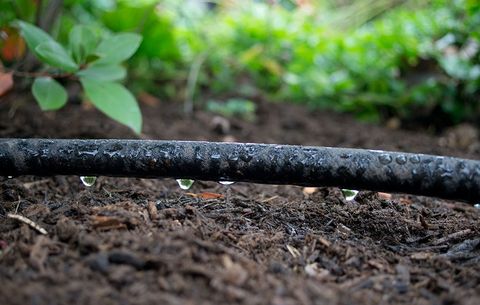
Tomatoes need consistent moisture from rain or a soaker hose. Ideal is an inch of water throughout the entire growing area; half again as much in the heat of summer. An inch of rain (which is what you are simulating) takes a long time to apply. Use a soaker hose or drip system, since wet foliage can spread disease. If you must use a sprinkler, use it in the morning, so that foliage can dry during the day. Don’t work in the garden while the foliage is damp.
Douse each plant’s root zone with a liquid feed twice during the growing season. Do this at transplant time and again when the first flower buds appear. Do not do it while they are in their run-up to adulthood. Powdered seaweed fertilizer or fish emulsion diluted in water, according to label directions, are two good possibilities, and a rich compost (though not technically a fertilizer) is always welcome.
Harvest your Amazing Tomatoes
I hope you have a huge yield of amazing tomatoes in your garden. Pick the fruit when it is deep red, to serve it right away, or a little green if you want fried green tomatoes or want to share them with your neighbors. The tomatoes will ripen fully on a countertop.
If you enjoy my blogs, please consider subscribing to my website so you get notified via email right away. This helps Google find my website so I can offer it to other gardeners like you! Thank you for your support!
